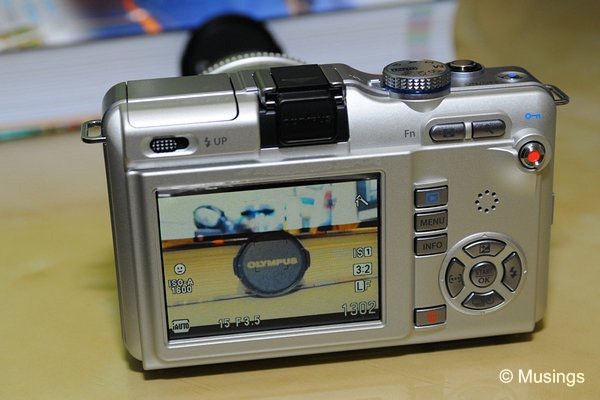Now for the inevitable bug bears. The Olympus Pen m4/3 cameras have got a lot of flak for their contrast-detection AF system. Basically, it’s slow. If you’ve only used DSLRs, the AF hunting the E-PL1 does is gonna be real annoying. The AF here hunts around for maybe 0.5 seconds before it settles in with that ‘beep’ informing you that all’s well and good now.

It’s hard to think of excuses: considering that the Panasonic engineers got their AF speed down pat with their m4/s’ GF1, while it clearly remained elusive for their Olympus equivalents when designing their new E-PL1. But then again, if you’ve been living mostly off consumer compact cameras, the AF performance of the E-PL1 isn’t really that dissimilar from those cameras. Of course you have that argument that if you’re paying a lot more for what is a premium compact camera…
This was the one consideration that nearly made me pick up the GF1, the additional 300 moola I’d had to fork out notwithstanding. But I finally reasoned that when outdoors, most of the pictures taken of Hannah right now is when she’s either in her pram or when Ling’s carrying her. In other words, as long as our baby isn’t scampering around on all fours, the E-PL1 comparatively lethargic auto-focusing should still be able to keep up.
Another niggling thing: notice the five button panel on the camera’s lower right? They’re a tad sensitive. When holding the camera grip with my right hand, there’s been a couple of occasions already now when my palm accidentally depresses one of those buttons when composing a shot. It won’t interrupt your shot thankfully, but you’d see menus unintentionally popping up when that happens.
The E-PL1 also includes a very nice option for you to set minimum and maximum ISOs when taking shots in P mode, similar to what I can do on the D300. Unlike the DSLR though, there isn’t (or maybe I just haven’t found) an equivalent option to set minimum exposure times. What that’s resulted in are my shots taken on 1/60s – rather generous considering that the camera has body stabilization – but at the expense of lower ISOs. Some way to set minimum shuttle speed to 1/30s would had been great.
OK – next post in this series, and it’ll be on noise and bounced flash.:)
Recent comments